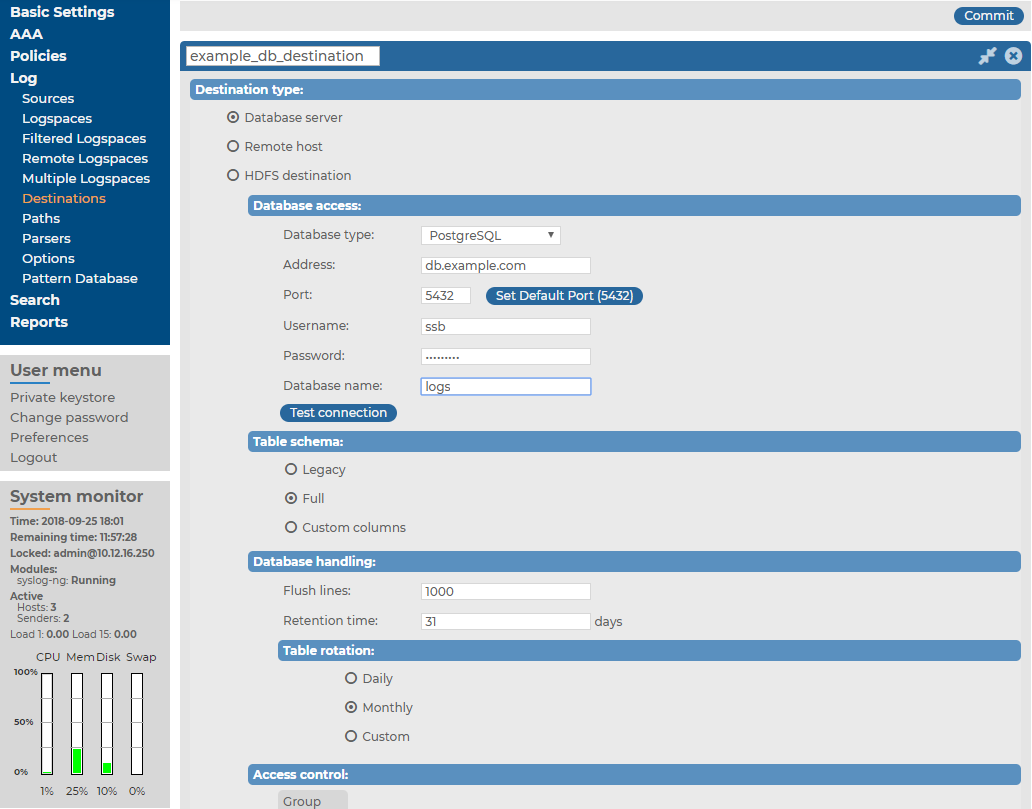The syslog-ng Store Box (SSB) appliance can forward log messages to remote destinations. The remote destination can be an SQL database running on a remote server, a syslog or log analyzing application running on a remote server, or a Hadoop Distributed File System (HDFS) destination.
-
To forward messages to a remote SQL database, complete the procedure in Forwarding log messages to SQL databases. Currently Oracle, Microsoft SQL (MSSQL), MySQL, and PostgreSQL databases are supported.
-
To forward messages to a remote server, complete the procedure in Forwarding log messages to remote servers.
To forward messages to an HDFS destination, complete the procedure in Forwarding log messages to HDFS destinations.

 .
.
 .
.